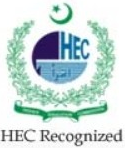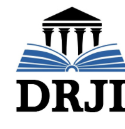Complexity Analysis of Pulse Oximeter Signals for Predicting Changes in Cardiorespiratory control system with Aging
DOI:
https://doi.org/10.63147/krjs.v1i01.10Abstract
The pulse oximeter signals have the potential to provide information about the functioning of the cardiorespiratory control system and its changing occurring due to aging and disease. The present study aimed to extract information on the system complexity of cardiorespiratory control system using pulse oximeter signals for predicting adverse health related events in elderly subjects. In this study we used complexity-based methods such as approximate entropy, sample entropy, permutation entropy, spectral entropy and singular value decomposition entropy to quantify the complex structure of pulse oximeter signals of young and elderly subject to decode age related changes in oxygen saturation. The dataset used in this study comprises of 36 healthy subjects, out of which 20 subjects are young and 16 are elderly. We use complexity-based methods such as approximate entropy, sample entropy, permutation entropy, spectral entropy and singular value decomposition entropy as feature sets and machine learning techniques including artificial neural networks, k-nearest neighbor, logistic Regression and random forest algorithms for developing prediction model. We used evaluation metrics true positive rate (TPR), false positive rate (FPR), precision, recall, F-Measure, and area under receiver operator characteristic curve (AUC) and total accuracy. The developed prediction model detects malfunction of cardiorespiratory control system in elderly subjects with an accuracy average of around 80%. The outcomes of the study can be helpful for clinicians for developing therapeutic interventions, and government for devising management strategies for those suffering from chronic obstructive pulmonary diseases and heart failure in elderly subjects.
Downloads
Published
Issue
Section
License
Copyright (c) 2022 Kashmir Journal of Science

This work is licensed under a Creative Commons Attribution-NonCommercial 4.0 International License.
This work is licensed under CC BY-NC 4.0







